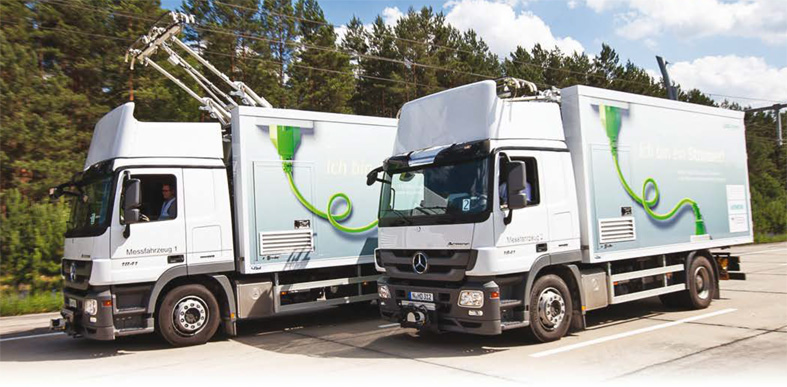Growing European concern over transport sector emissions
Battery-electric and fuel-cell trucks could be feasible in Europe within a little more than a decade, according to a study commissioned by the International Council on Clean Transportation (ICCT). Taking the steps necessary to turn that possibility into reality is crucial for meeting long-term climate goals in the transport sector.
Road freight is one of the fastest-growing contributors to CO2 emissions of the European transport sector. That trend must be reversed if the European Union is to achieve its goal of reducing total CO2 emissions by 80 per cent in 2050, relative to 1990 levels. Fuel efficiency and CO2 emissions policies targeting heavy-duty vehicles have lagged those for passenger cars and vans. But significant gains from road freight transport – emissions reductions of up to 90 per cent, effectively decarbonizing that part of the transport sector – lie within reach, given sufficiently strong policy support and adequate investment in vehicle innovations and infrastructure.
The report, prepared by CE Delft (Netherlands) and the German Aerospace Center (DLR) for ICCT, is a comprehensive survey of leading-edge zero-emissions technologies for short- and long-haul on-road freight carriers. Drawing on interviews with manufacturers, technical literature and other data sources, the study projects that the total costs of ownership of diesel vehicles, battery electrics, and fuel cell vehicles will tend to converge between now and 2030, assuming policies are put in place to stimulate technological innovation and infrastructure investment.
The analysis anticipates that different zero-emissions technologies will find favor in different settings. Battery-electric trucks are best suited to short-distance transport, such as goods distribution in cities and regions, where range requirements are lower and vehicles can recharge during scheduled downtime. Fuel-cell trucks, with longer range and refueling times that are comparable to conventional vehicles, will be a better alternative for long-haul applications, though specialized infrastructure such as overhead catenary wires or in-road inductive charging could make battery electric vehicles viable over long distances too.
The total cost of ownership – purchase price plus operating costs – for zero-emission heavy-duty vehicles at present falls somewhere between 140 per cent and 200 per cent of conventional diesel vehicles, for short-haul trucks. But the analysis shows that ratio falling rapidly as fuel savings offset other costs, to between 110 per cent and 140 per cent in 2020, and achieving rough parity by 2030.
On their current path, CO2 emissions from truck transport in the EU will rise nearly 25 per cent by 2050, due to increased transport volumes. But increasing the share of ton-kilometres transported by alternative vehicles (hybrid trucks as well as limited electric and fuel-cell vehicles) to half of the total overall would reverse that trend and cut 2050 GHG emissions by eight per cent, according to the study. And increasing alternative vehicles’ share still further to 90 per cent could result in an emissions reduction of 90 per cent.
Source: ICCT
